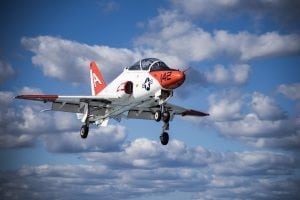
The Navy this week said it has ruled out contamination as a cause of physiological episodes (PEs) experienced by T-45 Goshawk and F/A-18 Hornet pilots and is continuing to narrow down other potential factors. The Naval Air Systems Command (NAVAIR) on April 1 said the service used a Root Cause Corrective Action (RCAA) analysis to determine the factors involved. Two separate RCAA core teams--one for F/A-18 Hornets and Super Hornets and EA-18G Growlers as well as a team for the…

 By
By 











